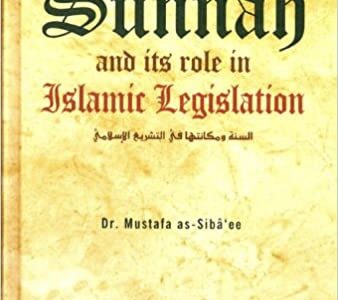
Rites of Passage
Rituals conducted at different stages of life, from conception until death and after, are means through which human beings live and act religiously. The terms “life-cycle rituals” or rites de passage, as described by Arnold van Gennep, embrace ritualistic ceremonies associated with conception, birth, puberty, marriage, death, and other significant events.
The transformative effect of rites of passage reinforces the religious worldview at both the individual and communal levels of experience. As vehicles for the transmission of religious symbols, values, self-understanding, and culture, the rites reconstruct and renew life. Thus they play an important role in the religio-cultural framework of a community.
The rites of passage of Islam provide Muslims with meaning as they progress through different life stages. The term refers to rites other than the religious practices known as the Five Pillars of Islam.
Islamic rites of passage are the products of the encounter between the worldview of Islam and cultures within and outside Arabia. Contrasting elements of uniformity and variety in these rituals highlight the distinction between normative and popular Islam and reflect the cultural diversity of the Muslim world. As a system of symbol and action, the Islamic rites of passage play an important role in reaffirming the Islamic worldview in both the ideational and experiential dimensions of life, thought, and culture.
The prophet Muḥammad selectively adapted certain pre-Islamic rites of passage of Arabia to conform with the main beliefs of Islam. With the spread of Islam, the Islamized life-cycle rituals of Arabia played a determining role in reshaping the non-Arabian rites of newly converted Muslim communities around the world.
Islam, like all religions, addresses questions concerning the existential dimension of life. The Qurʿān views the purpose of life as ʿibādāh — serving God through submission and thanksgiving (Qurʿān 2:21, 51:56). Hence the rites of passage of Islam are acts that symbolize this belief at all stages and in various dimensions of life. Generally, in terms of religious experience, life-cycle rituals are often perceived as a medium for enhancing Islamic spirituality and cultivating purity of intention for God alone.
Sexual Relations
Islam perceives sexuality as a natural dimension of life, subjected to ethical principles and rules aimed at maintaining social morality. The Qurʿān and the sunnah regard sexual relations between married partners as an expression of love and also as the means of human regeneration. They also contain recommendations concerning the rules and etiquette of conjugal relations. In order to maintain psychological balance between spirituality and corporeality, the two natural dimensions of humanity, the couple recite the following prayer while engaging in lovemaking: “In the name of Allāh, O Allāh, protect me and what you will bestow upon us (our offspring) from Satan” (Ṣahīḥ al-Bukhārī, vol. 7, section 62, chapter 67). Sexual intercourse must be followed by the ghusl or ritual bath, involving thorough washing of the whole body. This is a symbolic act of restoring a normal state of physical cleanliness necessary before engaging in rituals such as prayer and fasting.
Birth of A Child
At the birth of an infant, the adhān (call to prayer) is recited in its right ear, and the iqāmah (call to establish prayer) in its left. The infant is given a name, preferably derived from those of the prophets, their wives, or their companions. Alternatively, the name may be formed from the prefix ʿAbd (servant) and an attribute of God; for example, the name ʿAbd al-ʿAzīz means “servant of the Almighty.” On the seventh day the infant’s hair is shaved, and the ʿaqīqah, an ancient Arab ritual of sacrificing a goat or sheep, is performed. The ʿaqīqah is perceived as an act that symbolically expresses gratitude to God and happiness for the birth of a child. The prophet Muḥammad Islamized the pre-Islamic Arabian ritual of ʿaqīqah by associating its meaning with Abraham’s willingness to sacrifice his son Ismāʿīl. It symbolizes gratitude to God. The meat of the sacrificed animal is distributed among the poor, neighbors, and relatives.
Circumcision
Khitān (circumcision), the surgical removal of the foreskin of the penis, is an ancient Arabo-Semitic practice. Though not mentioned in the Qurʿān, khitān is traditionally identified as an act dating back to the time of the prophet Ibrāhīm (Abraham). Khitān is a sunnah — a custom, not a legal obligation. Unlike the case of Judaism, circumcision has no doctrinal significance in Islam. It is viewed by Muslims as an act of ṭahārah (hygiene) and a method for prevention of diseases of the urinary tract. In the past there were elaborate ceremonies associated with male circumcision, each reflecting the diversity found in the Muslim culture. Some of these ceremonies are still observed in rural areas, particularly in regions of West and South Asia and also the western and northern portions of Africa. Circumcision has traditionally been performed between the ages of three and seven years, or before reaching puberty. In rural areas it is normally performed by a barber; however, with the spread of modern medicine, most male infants are now surgically circumcised in hospitals, either on the second day after birth or before puberty. In modern times the ceremonial dimension of circumcision has also been greatly diminished. Being a custom, circumcision is not obligatory for adult converts to Islam.
The ancient Arabs also practiced khafḍ, a slight excision of the clitoris. Khafḍ was tolerated during the early years of Islam but gradually fell into disuse; it is no longer practiced in the heartland of Islam. Ḥadīth texts indicate that Muḥammad expressed reservations about its practice. Khafḍ is not clitoridectomy, which involves removal of the female genital organs of the labia minora, labia majora, and the clitoris, a pre-Islamic rite found among the peoples of North and Northeast Africa (particularly Sudan, Egypt, Ethiopia, and Morocco), and in Java. Clitoridectomy has survived among the Muslim communities of these countries. In modern times, however, the continuing practice of clitoridectomy has led to protests against it and calls for reform in Sudan, Egypt, and Morocco.
Neither male nor female circumcision has any doctrinal basis in Islam. Sociologically, they symbolize passage into adulthood and define and reinforce gender roles.
Puberty
Puberty represents entrance into the state of adulthood. In the official Islamic perspective, it also marks the beginning of religious and social responsibility. Upon attaining puberty one is oôobliged to perform the religious rituals of Islam — ṣalāh, the daily prayers, and ṣawm, fasting during the month of Ramaḍān. Since the performance of these obligatory rituals requires that one should be in a state of physical cleanliness, children are instructed early on how to perform the rituals of cleansing oneself. These rituals include wuḍūʿ, an ablution before the daily prayers, and ghusl, a ritual bath or washing of the whole body after a nocturnal ejaculation, menstruation, or sexual intercourse, conditions that cause one to enter into a state of janābah or being physically unclean. Muḥammad is reported to have said, “Purification is half of faith.”
Marriage
Nikaḥ (marriage) in Islam is a contract between two consenting partners. It is not a sacrament. Marriage is the appropriate means through which one channels one’s sexual urges and raises a family. Since sexuality is an integral part of humanity, Islam encourages marriage and discourages celibacy. Marriage shields against irresponsible sexual behavior and thus helps preserve social morality. The prophet Muḥammad recommended marriage to those who could afford it and fasting to those who could not, for fasting helps attenuate passion. As with other rites of passage, marriage customs in the Muslim world are varied, with local customs playing an important role. The variety found in Muslim marriage ceremonies has been the subject of several studies in cultural anthropology.
Death
The Arabic word mawt (death) means “cessation of breathing.” Death is considered a transitional stage from life in this world to life in the hereafter. Normally, the dead person is to be buried on the day of death. The rituals of the janāzah (funeral) are based on the practice of Muḥammad, differing slightly from country to country according to cultural factors. Ghusl or bathing of the corpse is performed in order to remove physical impurities such as blood and excrement; it is an essential part of the funeral ceremony. The corpse is bathed by persons of the same gender. Care is taken not to expose the nakedness of the corpse, in order to respect the dignity of the dead. The corpse is then wrapped in a kafan, a white shroud consisting of three pieces for a man and five for a woman, which covers it completely. Ṣalāt al-janāzah, the funeral prayer for the dead, is performed in the mosque following any of the prescribed daily prayers, with the bier placed in front of the congregation. The funeral prayer is led either by a relative of the deceased or by the imam, the prayer leader of the mosque. The prayer is performed in a standing position and does not involve bowing or prostrations. It acknowledges the reality of death and seeks God’s mercy for the dead. The corpse is carried to the graveyard for burial in a procession consisting of relatives, friends, and other members of the community, who recite the shahādah, the attestation of faith. The corpse is placed in the grave with its face turned toward the Kaʿbah. Every participant in the funeral ceremony is expected to contribute three handfuls of earth toward the filling of the grave, reminding the participant of death and reinforcing humility.
In Iran, Africa, and Southeast Asia there are no social prohibitions against women joining in the funeral ceremony or visiting the graveyard; however, in the patriarchal societies of Arabia and South Asia, women are not permitted to join in either function.
In Southeast Asia, relatives of the dead distribute money among the people attending the funeral ceremony as an act seeking expiation for the sins committed by the dead person. This is probably owing to the influence of the Buddhist notion of “merit-making.” In the Indian subcontinent, the fātiḥah, a ceremonial communal meal, is served by the bereaved family as an act of charity on behalf of the dead and seeking God’s mercy and forgiveness. This ceremony for the dead is held every Thursday night for a period of forty days after the occurrence of a death. It involves collective recitation of the first chapter of the Qurʿān at the end of the meal. Indian and East African Muslims also observe the ceremony of khatmat al-Qurʿān, congregational recitation of the whole of the Qurʿān, also held every Thursday night for forty days after the ʿishāʿ (night prayer) with the similar intention of seeking God’s mercy and compassion for the dead. Such localized Islamic rites of passage for the dead are viewed with disdain by Islamic orthodoxy.
Modern Interpretations
In modern times, contributions to Islamic thought and literature have also focused on the role of Islamic life-cycle rituals. While reiterating the main theme that the aim of Muslim life is submission and thanksgiving to God, they illustrate the tensions between tradition and modernity in the Islamic world. The culturally varied role of Islamic life-cycle rituals in shaping modern Muslim life, thought, and culture has also been a theme of various novels and films produced in the Muslim world.
ʿAlī Sharīʿatī (d. 1977), a modern Islamic thinker, discusses this theme in his philosophical discourse on the anthropology of Islam. For Sharīʿatī, passage through the various stages of life involves a dialectical struggle between al-rūḥ (God’s own spirit or breath), which God has instilled in all human beings, and turāb (dust) or ṣalṣāl (clay), the physical elements that make up a human body (Qurʿān 15:29, 32:9, 38:72). According to him, salvation lies in triumph over the struggle between the spiritual and material components that make up human personality, witnessed in the submission and gratitude to God expressed symbolically at various stages of the life cycle.
Rites of Passage
652 – 004
Last Updated: 06/2021
Copyright © 2017-2021o Institute for the Study of Islam (ISI) | Institute-for-the-study-of-Islam-org | Discerning Islam | Discerning-Islam.org | Commentaries on Islam | © 2020 Tips Of The Iceberg | © 1978 marketplace-values.org | Values In The Marketplace | are considered “Trade Marks and Trade Names” ®️ by the Colorado Secretary of State and the Oklahoma Secretary of State. All Rights Reserved.


